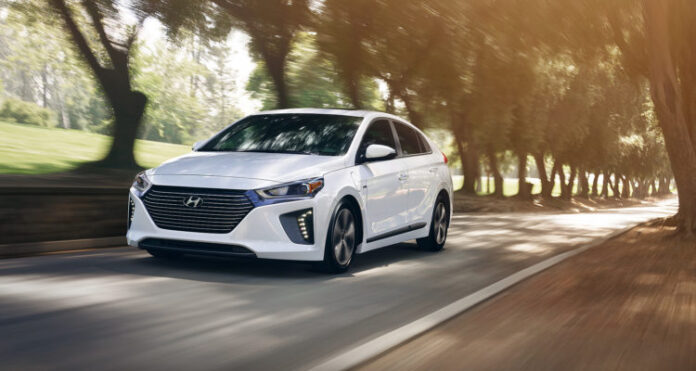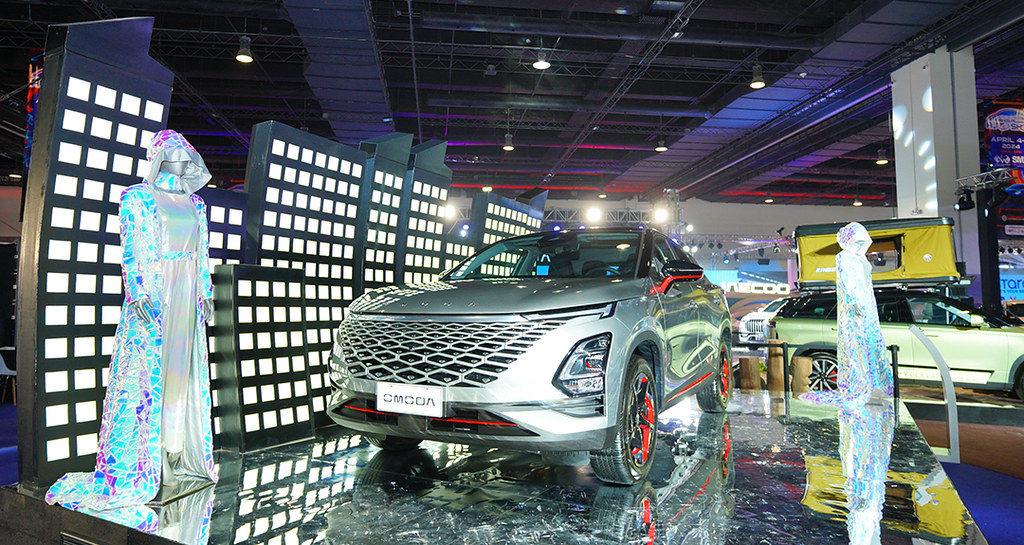Before even testing the Hyundai Ioniq, I already had some preconceived notions about what a modern Hyundai car experience would be. Having tried earlier models of the Veloster and some of their SUVs, I knew I was getting a fun drive, with loads of practicality and ample creature comforts. But nothing could have prepared me for the eye-opening (and wallet-preserving) first-hand drive experience of having an Ioniq plug-in hybrid all to myself for a week.
Best-case scenario. The Hyundai Ioniq Plug-In Hybrid Electric Vehicle looks like a cohesive and balanced four-door hatchback that’s both practical and incredibly roomy. There are hints that this is not a regular Hyundai—it is one of three vehicles sharing the Ioniq name and this one can be plugged in to charge its electric motor but you can also fill it up at your local gas station. Think of it as a best of both world’s scenario, an EV that still has a gas engine.
Got what you need. The interior on my fully-decked out model had tasteful leather seats in rather generic light gray color with blue piping. The dashboard is well-appointed and easy to understand. I like that the infotainment display was sized just right and not too big. Android Auto synced nicely with my Samsung Galaxy S9. This allowed me to use Waze and Google Maps as well as various podcast and music playback services.
Space is abundant as well, especially legroom and headroom for taller folks. The trunk is also capacious, ideal for hauling a few weeks’ worth of groceries or all your luggage and camping essentials for a weekend trip.
All about the ride. Starting the Ioniq can throw you for a loop. It is deceptively quiet. There’s zero starter or idling sounds, you just need to trust that the car has started because all the lights go on. Ride and handling are solid. The steering is a bit too feathery for my taste, but nonetheless responsive and very accurate. Visibility in this car is generally good except for the rear-view, which has a spoiler covering around 40 percent of the view. I didn’t test the Ioniq for performance but when pushing the engine, it does take a bit of time for power to kick in. This sensation is like turbo lag. What is happening is that the gas engine is engaging at a certain point. Suffice to say, the Ioniq PHEV isn’t going to excite too many people in a drag race. But that’s perfectly fine.
Look ‘ma, no gas. I’m happy to report that after a week with the Hyundai Ioniq Hybrid as my main ride, I never had to head to a gas station. I did have to charge the car’s EV battery twice in a public charging station, a total of five hours, yet managed to return the car to Hyundai with a full gas tank (or a 977km range) as well as the battery on reserve. If I was driving my 2003 VW Jetta Turbo, I would have had to gas up at least once and could have easily spent CA$50-55 in Premium Gas to cover the distance that I covered mostly on battery. This was a refreshing realization. I had to keep checking my gauges to see if I was moving the needle in terms of gas consumption, but no, it was completely full.

Teaching an experienced driver new tricks. As someone who has driven a stick-shift for most of his driving life and, to a lesser extent, some automatic cars. The idea of visceral and instantaneous sensory feedback and muscle memory is part of how I drive. I can hear and feel the engine, I know when it is time to shift, and I can calculate the next steps ahead of time.
Driving the Hyundai Ioniq has taught me new things. The LED instrument cluster doesn’t focus on speed or acceleration or rpms, instead it focuses on range as well as on driving economically. Each minute decision, whether it’s braking, coasting, or accelerating, has an overall effect on your power storage and your mileage. This car has taught me to change the way I drive to better extend the battery life.
The Hyundai Ionic is a more visual experience. You can’t hear the engine until you deplete your battery storage or need to accelerate on the highway. You always know what is going on thanks to the visuals on the cluster. You can tell when you’re using up battery and when you’re regenerating energy. You also see a green ECO logo light up when you’re using the electric motor. This disappears when the gas engine kicks in during more aggressive driving.
Alleviating your battery woes. Most of the time, the car is ninja-like silent except for a mild hum that sound more like a Star Wars speeder than a passenger car. Once on Drive, it requires practice to stay within the ECO level of driving, as being more aggressive with the accelerator pushes you to PWR, which sees your battery reserves plummet dramatically. But smart coasting, especially downhill, or braking regeneratively, feeds energy back into the battery.

If you, like me, panic when your smartphone’s battery is below half, then driving the Hyundai Ioniq, or any similar PHEV, might be a source of anxiety. It shouldn’t be. You still have around a 700km range once the battery peters out. But the idea for me was not to use the gas reserves, so I opted to charge the car as often as possible.
VERDICT
Hyundai Ioniq PHEV proved to be one of the most capable and most civilized cars I’ve had the pleasure to drive. This would be a family car I would consider as someone who likes the certainty of a gas engine but feels strongly about the benefits of going green through hybrids and EVs.
SPECIFICATIONS
Engine: Interior permanent magnet synchronous electric motor with 88kW (118hp) and 218lb-ft of torque
Transmission: Single speed reduction gear with sport mode
Drive: Front-wheel
Suspension: MacPherson strut with coil springs and gas-charged dampers/Coupled Torsion Beam Axle
Tires: 205/55R16 Michelin Energy Saver A/S
Brakes: 4 wheel disc/4 channel/4 sensor
L x W x H: 4,470 x 1,820 x 1,425mm
Wheelbase: 2,700mm
Other features: Automatic Emergency Braking, Smart Cruise Control, Lane Keep Assist System, headlights with Dynamic Bending Light (DBL), rear parking sensors, navigation system with 8” color touchscreen display, Infinity Premium Audio with Clari-Fi Music, Restoration Technology and 8 speakers, wireless device charging, complimentary Blue Link Guidance Package for three years, Integrated Memory System (IMS) for driver seat, floor console-mounted rear vents, cargo cover, driver’s blind spot mirror, Blind Spot Detection (BSD) with Rear Cross-traffic Alert and Lane Change Assist, Tire Pressure Monitoring System (TPMS) with individual tire pressure indicator, advanced dual front airbags (SRS) with Occupant Classification System (OCS), driver and front passenger side-impact airbags (SRS), side-curtain airbags (SRS) for front and rear passengers, driver’s knee airbag, remote keyless entry system with alarm
Price: CA$32,000 (approx. P1.3M)
















